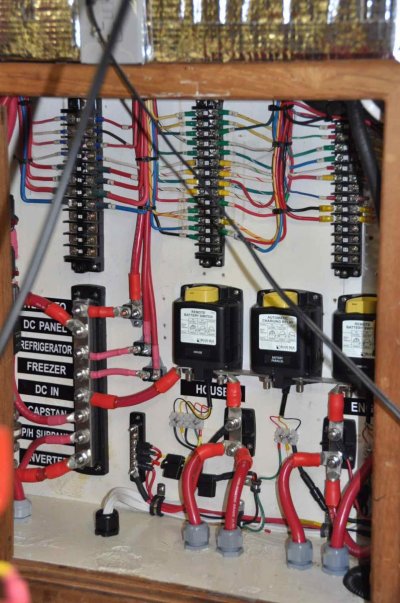JDCAVE
Guru
- Joined
- Apr 3, 2011
- Messages
- 2,905
- Location
- Canada
- Vessel Name
- Phoenix Hunter
- Vessel Make
- Kadey Krogen 42 (1985)
Are there “tricks” one can do with a multi meter to determine the ultimate breaker origin or load destination at the terminal strip? I’d rather not go through the process of disconnecting wires to see which loads aren’t working. The PO numbered the wires at the strip, but in most cases I have no idea the breaker of origin or the destination. Some suggestions would be appreciated.

Thanks! Jim

Thanks! Jim

